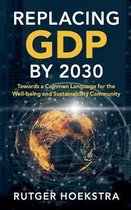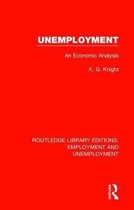Bad Breaks in Real GDP and Employment Exploring the Persistence of Aggregate Demand Shocks in the United States
Afbeeldingen
Sla de afbeeldingen overArtikel vergelijken
- Engels
- Hardcover
- 9783031577680
- 28 juni 2024
- 100 pagina's
Samenvatting
Why do policymakers allow economies to settle into a “new normal” after a bad break in the economy rather than try to return the economy to its previous trend? In this book, economist Harrison C. Hartman discusses some of the variables that impact a nation’s ability to recover from negative aggregate demand shocks.
Spanning total real GDP, per capita real GDP, and nonfarm payroll employment in the USA, the book emphasizes the role of aggregate demand shocks in causing the US economy to fail to return to trend. The resulting book challenges modern mainstream macroeconomic theories and highlights the complexities of post-recession recovery. The chapters provide econometric evidence both for and against the impact of aggregate demand on real GDP and employment levels in the long run.
Hartman studies modern macroeconomic theories related to economic resilience and demand using (a) the velocity of money and the equation of exchange and (b) econometric analysis to dissect modern macroeconomic theories related to economic resilience and demand. The book provides methods to estimate and evaluate trends, and after simple methods for estimating trend and discussing associated results, the book turns attention to model selection, hypothesis testing and further results. This book also offers some possible areas for future work.
A thought-provoking exploration of economic recovery or lack thereof, the book covers aggregate demand, employment, real GDP, and economic theories (classical, Keynesian, monetarist, neoclassical, new-Keynesian, and post-Keynesian perspectives). Bad Breaks in Real GDP and Employment is a timely and essential guide for economists navigating the complexities of past, present, and future macroeconomic landscapes. It explains the functionality of aggregate demand in the context of economic recession, offering insight into why some AD shocks feel permanent.
This book provides econometric evidence supporting Keynesian and post-Keynesian perspectives on the potential importance of aggregate demand in determining real GDP and employment levels in the long run, particularly in cases when real GDP and employment fail to recover fully after recessions.
This book is one of few contemporary works (a) explicitly noting the economic importance of money velocity and (b) focusing on econometric analysis that at least at times supports post-Keynesian perspectives.
Harrison C. Hartman is an economist who has taught at Emory University, Georgia State University, University of Georgia, Kennesaw State University, Ursinus College, and Penn State University. He is the author of It's Velocity Stupid! (2015).
Why do policymakers allow economies to settle into a “new normal” after a bad break in the economy rather than try to return the economy to its previous trend? In this book, economist Harrison C. Hartman discusses some of the variables that impact a nation’s ability to recover from negative aggregate demand shocks.
Spanning total real GDP, per capita real GDP, and nonfarm payroll employment in the USA, the book emphasizes the role of aggregate demand shocks in causing the US economy to fail to return to trend. The resulting book challenges modern mainstream macroeconomic theories and highlights the complexities of post-recession recovery. The chapters provide econometric evidence both for and against the impact of aggregate demand on real GDP and employment levels in the long run.
Hartman studies modern macroeconomic theories related to economic resilience and demand using (a) the velocity of money and the equation of exchange and (b) econometric analysis to dissect modern macroeconomic theories related to economic resilience and demand. The book provides methods to estimate and evaluate trends, and after simple methods for estimating trend and discussing associated results, the book turns attention to model selection, hypothesis testing and further results. This book also offers some possible areas for future work.
A thought-provoking exploration of economic recovery or lack thereof, the book covers aggregate demand, employment, real GDP, and economic theories (classical, Keynesian, monetarist, neoclassical, new-Keynesian, and post-Keynesian perspectives). Bad Breaks in Real GDP and Employment is a timely and essential guide for economists navigating the complexities of past, present, and future macroeconomic landscapes. It explains the functionality of aggregate demand in the context of economic recession, offering insight into why some AD shocks feel permanent.
This book provides econometric evidence supporting Keynesian and post-Keynesian perspectives on the potential importance of aggregate demand in determining real GDP and employment levels in the long run, particularly in cases when real GDP and employment fail to recover fully after recessions.
This book is one of few contemporary works (a) explicitly noting the economic importance of money velocity and (b) focusing on econometric analysis that at least at times supports post-Keynesian perspectives.
Productspecificaties
Inhoud
- Taal
- en
- Bindwijze
- Hardcover
- Oorspronkelijke releasedatum
- 28 juni 2024
- Aantal pagina's
- 100
Betrokkenen
- Hoofdauteur
- Harrison C. Hartman
- Hoofduitgeverij
- Palgrave Macmillan
Overige kenmerken
- Product breedte
- 148 mm
- Product lengte
- 210 mm
- Verpakking breedte
- 148 mm
- Verpakking lengte
- 210 mm
EAN
- EAN
- 9783031577680
Je vindt dit artikel in
- Categorieën
- Beschikbaarheid
- Te reserveren
- Taal
- Engels
- Boek, ebook of luisterboek?
- Boek
- Studieboek of algemeen
- Algemene boeken
Kies gewenste uitvoering
Prijsinformatie en bestellen
De prijs van dit product is 42 euro en 99 cent.- Prijs inclusief verzendkosten, verstuurd door bol
- Ophalen bij een bol afhaalpunt mogelijk
- 30 dagen bedenktijd en gratis retourneren
- Dag en nacht klantenservice
Rapporteer dit artikel
Je wilt melding doen van illegale inhoud over dit artikel:
- Ik wil melding doen als klant
- Ik wil melding doen als autoriteit of trusted flagger
- Ik wil melding doen als partner
- Ik wil melding doen als merkhouder
Geen klant, autoriteit, trusted flagger, merkhouder of partner? Gebruik dan onderstaande link om melding te doen.








